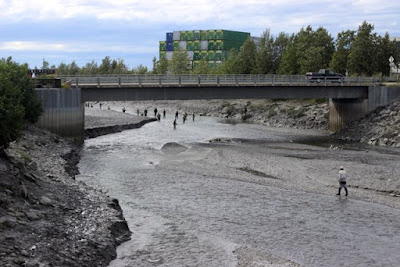"As things stand today, that conventional wisdom lags far behind the reality: The writing of his demise is on the wall and it is past time his critics started acting like it.
This is not actually new, so much as it is finally coming into focus. The fact that Trump’s orbit is thick with garden-variety criminals has been staring everyone in the face from the outset. Paul Manafort was a known Russian agent, with deeply shady financial entanglements when he became Trump’s campaign chairman. Michael Cohen is such a walking cliche, he could make extra cash as a Paulie Walnuts stunt double. Trump’s first national security adviser was on the take from, and thus compromised by, Russia, Turkey, and Qatar. I have yet to find a single person in Washington, even among Trump’s supporters, who believe that a thorough scrubbing of the Trump and Kushner Organization books wouldn’t uncover dozens of felony-level financial crimes and fraud offenses. And yes, Trump stooges, Trump has already engaged in a treasonous level of collusion with Russia in plain sight, the President’s and media’s claims to the contrary notwithstanding
All of these nefarious crimes and misdemeanors are apparent right now—before the New York Attorney General has moved against the Trump Organization, or Special Counsel Robert Mueller has obtained his most significant indictments, all of which are sure to reveal much we don’t yet know.
Against this backdrop, most Democrats seem satisfied with business as usual, banking on a midterm wave this fall, and Republicans—even those who privately dislike the President—either continue to openly enable him or have abandoned the political field altogether.
While Trump creatively fights for his survival, his opposition has tried nothing and is all out of ideas."It's not original to say that Trump is a classic bully, of the Mafia variety. But people seem to require a regular reminder. All the Republicans in Congress are afraid to stand up to him because he comes at critics with a noisy attack. But being called names on Twitter, or even having Trump support your opponent in November, is a small price to pay to minimize the damage this president is wreaking on the US and the world.
And neither of my two Senators are up for election this year. And one of them has already stood up against her party when she lost in the primary. And Alaskans supported her. I understand it's considered prudent to try to make nice and negotiate for as many goodies as you can for your state. But that's like [fill in a better metaphor than rearranging the deck chairs on the Titanic, my mind isn't producing anything]. Actually, in the face of climate change, every day we don't work hard to reduce carbon in the atmosphere does mean we're aggravating the effects of extreme climate in the future. And you don't have to look past current forest fires to get this.
So each day waiting for the Trump card castle to collapse on its own, adds to the number of lives that will be terribly altered or lost by floods, droughts, fires, and dislocation in the future.
Sometime ago I posted (or so I thought, I can't find the post anymore) a call for a statue for the first six Republican US Senators and 20 Republican Representatives to unite and hold firm against Trump. The point was we should award those brave enough to stand on principles early on, when it wasn't yet safe. These congress members would be able to sleep at night, knowing their grandchildren would see their names as people who were not afraid to stand up against the corrupt and disgusting president.
I'm not sure anyone should get rewarded now - except maybe those like Jeff Flake, who have resigned themselves to not running again so they could critique the president. Let's hope we have a Congress that will and can do something after the November election. People who will use imagination and creativity to stop the insanity and lead the country back to some semblance of justice and rule of law.





































